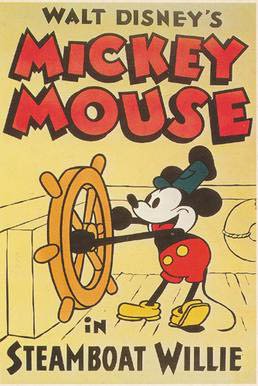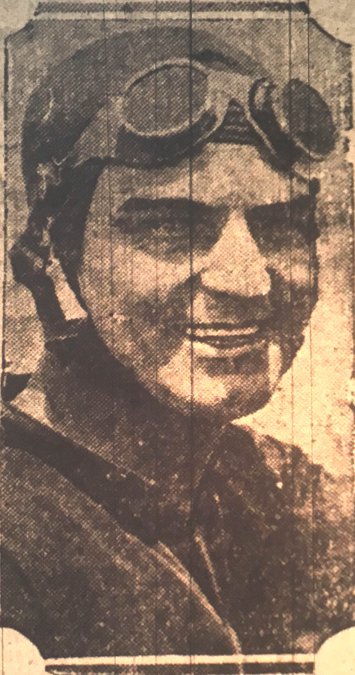Each week we’ll take a step back into the history of Great Bend through the eyes of reporters past. We’ll reacquaint you with what went into creating the Great Bend of today, and do our best to update you on what “the rest of the story” turned out to be.
On Sunday, Nov. 18, 1928, cartoonist Walt Disney released “Steamboat Willie” and made history with this first commercial automation with synchronized sound. Spoiler: Mickey Mouse plays a prominent role.
According to an article at Wikipedia.com, “Disney understood from early on that synchronized sound was the future of film. It was the first cartoon to feature a fully post-produced soundtrack which distinguished it from earlier sound cartoons such as Inkwell Studios’ Song Car-Tunes (1924–1927) and Van Beuren Studios’ Dinner Time (1928). Steamboat Willie became the most popular cartoon of its day.
People in Great Bend did not get an opportunity to see the cartoon until much later. The two movie houses of the day, the Echo Theater and the Andress Theater, had much different fare. The Andress went all out to promote a four-day showing of “Wings,” starring Clara Bow, Charles Rogers, Gary Cooper and Richard Arlen. The Echo presented “Michael Strogoff,” with a special price of 10 cents admission for ladies.
“Cast of 6,000, including 4,000 wild riding dare-devil-semi-savage tartar tribesmen and more than 1,000 Russian cavalry and Cossacks.
“You will watch in amazement this magnificently mounted, overpoweringly brilliant and exclusive film masterpiece. You will be thrilled by the adventures of the hero-- moving, dramatic, courageous, agile superb! From first to last it will hold you spellbound.”
(Sigh.) You’ve got to love the 1920’s! Such vivid language!


Drama at sea
On Nov. 10, the steamship S. S. Vestris sailed away from a harbor in New York, en route to Rio Plate near Uruguay. It ran into a storm, and began taking on water from several leaks, including a coal chute near the boilers, according to a first-hand account reported by the Associated Press in the Great Bend Tribune on Nov. 15. Two days later, an S.O.S. was issued, and the ship was abandoned. But, many people died,reportedly when the ship sank and the suction drug many down with it. Survivors were picked up by various civilian boats in the area and the USS Wyoming. The U.S. Attorney’s office was pushing for an immediate investigation by press time Nov. 15, hoping to question between 50 and 60 witnesses.
One of the eight surviving women was interviewed after a tearful reunion with her husband who she was separated from in the waters off of Norfolk, Va., where the ship sank.
“Mrs. Slaughter said she fell out of the boat and was pulled under the water by the suction from the liner as it sank.
“It seemed as though I was under a long time,” she said. “And when I finally bobbed up I saw my husband paddling a few yards away. Both of us were nearly exhausted.”
A lifeboat neared, and the second officer of the ship, Leslie Watson, jumped out and swam to her side, as the boat continued to pull away. He held her for nearly an hour before he was able to signal another boat that came by and helped her into it, exhausted. She had lost sight of her husband, fearing the worst.
One can imagine now, what it might have been like at the end for Earl Devore, formerly from Stafford, who was “among the victims on the foundered liner Vestris.”
Earl Devore had been born and raised in Stafford County.
“Devore’s parents lived in Macksville. He became interested in motor cars when he accepted a chauffeur’s job with Dr. Adams of Byers who then resided in St. John. Devore left Stafford County about 10 years ago and most of the time since then has lived in California where he took up the racing game. Mrs. Devore who also was a passenger on the boat and was among the many saved, saw her husband sink, dispatches report. She vainly tried to induce occupants of her boat to give him a hand. Devore’s first wife and daughter now reside in St. John.”
According to Devore’s Wikipedia entry, he and fellow racer Norman Batten both perished after the ship sank. He is credited with saving both his and Batten’s wife. The entry also states it was reported Devore was eaten by sharks, but that cannot be confirmed.


In other news...
This week in 1928, the Tribune reported that “Henry C. Cook, 57, the first white boy born in Great Bend, died Sunday morning (Nov. 11) from heart disease.”
“Mr. Cook had been actively engaged in farming all his life, confining his activities to the place his father, the late John Cook, homesteaded."
The Tribune also shared a story from Timken, concerning how that town got its name.
“Few people in the state know that this town was named for Timken, inventor of the roller bearings. Mr. Timken gave to the Santa Fe the section of land on which the town site was located in order to induce the railroad company to name the new town after him.
“J.W. Brazda, a well known man of this town was telling of the time when Henry Timken was one of the early settlers in the Timken community, and owned a large ranch which was noted for its hospitality to strangers.
“The first invention patented by Henry Timken, as Mr. Brazda recalls, was a buggy spring which made such a favorable impression that soon Mr. Timken was drawing a $3.00 royalty on every buggy spring in the country.”
It should be noted that Timken never lived in Timken. His company was located in St. Louis. His fortune was partially made from land speculation.







